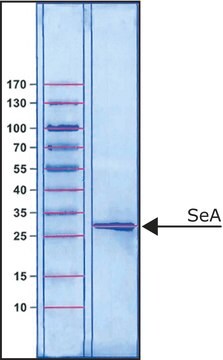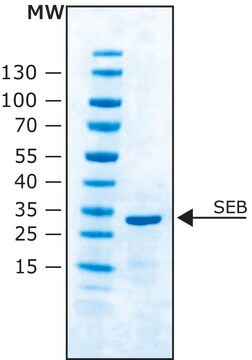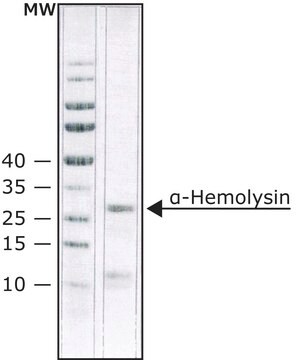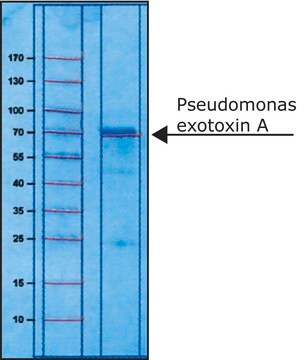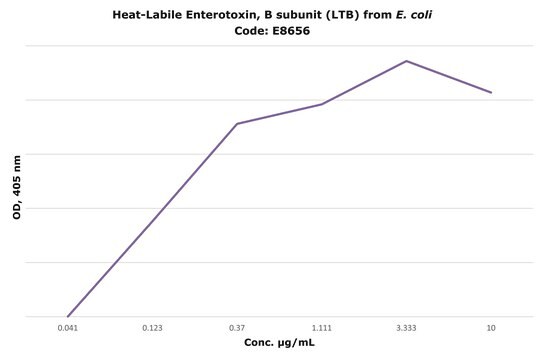T5662
Toxic shock syndrome toxin-1 from Staphylococcus aureus
Synonym(s):
Staphylococcal Enterotoxin F, TSST-1
About This Item
Recommended Products
composition
Contains ~50% protein (Lowry); balance primarily sodium chloride and sodium phosphate buffer.
Quality Level
availability
not available in USA
solubility
H2O: soluble 0.50-0.60 mg/mL, clear to slightly hazy, colorless to faintly yellow
storage temp.
−20°C
Application
Biochem/physiol Actions
Preparation Note
Signal Word
Danger
Hazard Statements
Precautionary Statements
Hazard Classifications
Acute Tox. 2 Dermal - Acute Tox. 2 Inhalation - Acute Tox. 2 Oral
Storage Class Code
6.1A - Combustible acute toxic Cat. 1 and 2 / very toxic hazardous materials
WGK
WGK 3
Flash Point(F)
Not applicable
Flash Point(C)
Not applicable
Certificates of Analysis (COA)
Search for Certificates of Analysis (COA) by entering the products Lot/Batch Number. Lot and Batch Numbers can be found on a product’s label following the words ‘Lot’ or ‘Batch’.
Already Own This Product?
Find documentation for the products that you have recently purchased in the Document Library.
Our team of scientists has experience in all areas of research including Life Science, Material Science, Chemical Synthesis, Chromatography, Analytical and many others.
Contact Technical Service